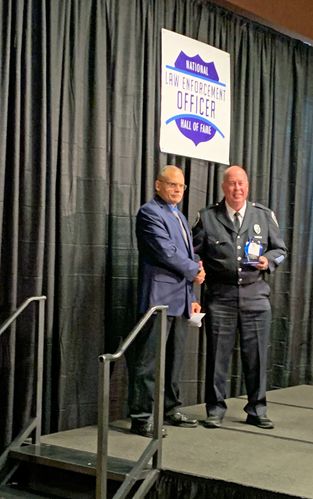
Kevin R. Davis was inducted into the National Law Enforcement Hall of Fame as 2019 Trainer of the Year

Kevin R. Davis was inducted into the National Law Enforcement Hall of Fame as 2019 Trainer of the Year
Kevin R. Davis is a veteran of over 39 years in the security and law enforcement fields. His unique combined work experience starting as a large concert venue security supervisor, security contractor for the federal government, corrections, patrol, street narcotics detective, SWAT Team Leader and lead instructor, 25 years as a use of force instructor, police and private citizen firearms instructor, and expert on police tactics, training and use of force, as well as a writer and author makes him uniquely qualified.

Kevin has trained thousands of law enforcement officers and private citizens in firearms, tactics and use of force. He has consulted and trained police labor unions, investigators and agencies on the legal aspects of use of force and use of force investigations. He has consulted on cases in multiple states and Canada and has Federal, State and Local court experience.

Kevin Davis offers a knowledgeable and professional training and consulting service with experience working with district attorneys, prosecutors, defense attorneys, police investigators, officers or citizens who have used deadly or non-deadly force. Kevin R. Davis has been a featured presenter and speaker at police - training, labor, narcotics and tactical conferences.
Kevin was the recipient of the 2018 Distinguished Training Award by the State of Ohio Attorney General

Kevin has instructed at the Ohio Peace Officers Training Academy, Ohio Tactical Officers Conference, the RangeMaster Tactical Conference and the International Law Enforcement Educators and Trainers Association



Ruminations about policing and use of force.
Copyright © 2018 KD Training & Consulting - All Rights Reserved.
Powered by GoDaddy